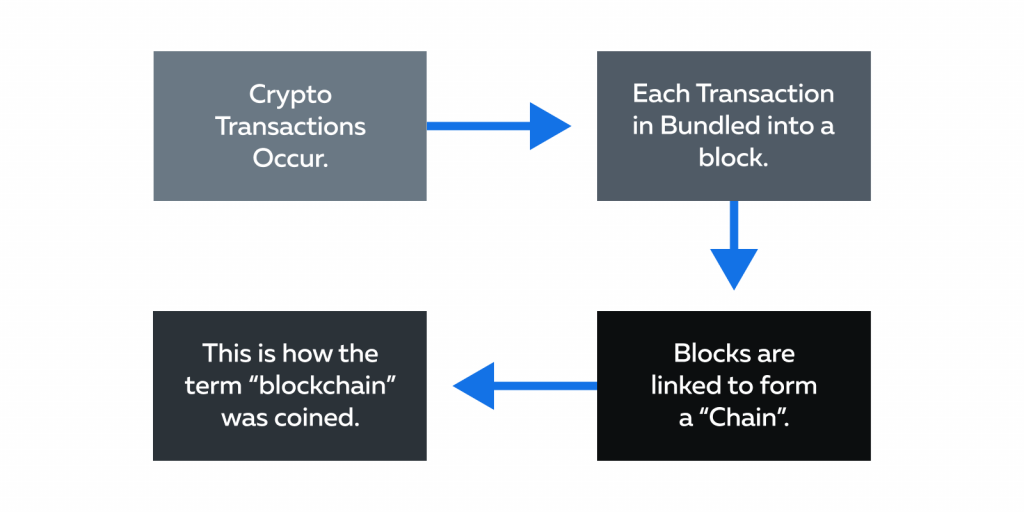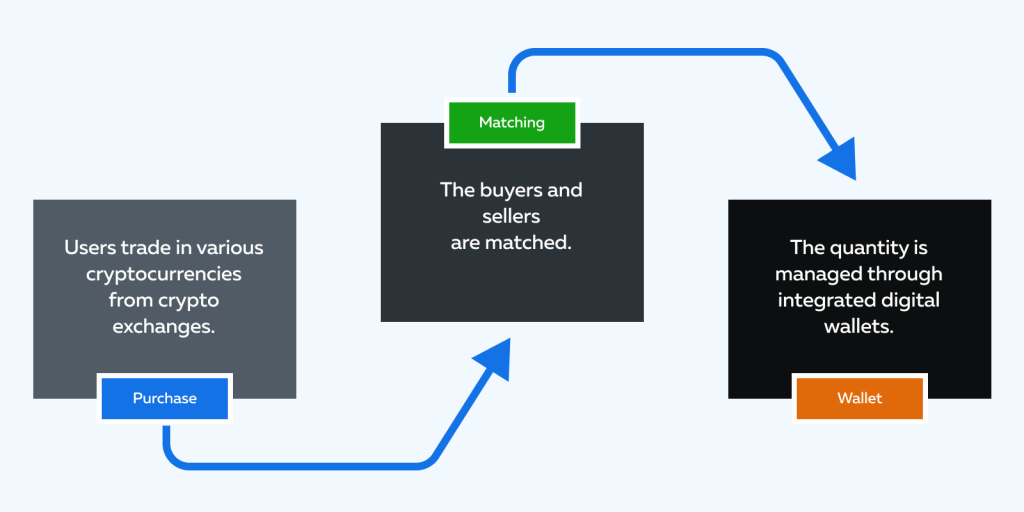

December Trading
Deals Are Live!
Save on Global+, data access,
and add-ons.
See All December Deals

Black Friday
Nov 28-Dec 31
18 days : 14 hours
50% OFF Global+ Quarterly
+ 50% OFF Data (3 months)

Cyber Monday
Dec 1 - Dec 31
18 days : 14 hours
60% OFF Global+ Monthly
+ Data (1 month)

Add-on Deals
Dec 1 - Dec 31
18 days : 14 hours
50% OFF
Add-ons

New Year Sale
Dec 26 - Jan 1
12 days : 14 hours
30% OFF Global+ Lifetime
*Data not included
Education
December 4, 2024
SHARE
Crypto Trading for Beginners: Getting Started and Essential Tips

Digital assets like Bitcoin and Ethereum can hold the promise of financial
freedom and innovation. However, the quantum of success you’ll achieve while
trading in cryptos entirely depends upon your level of understanding,
experience, and the strategies you choose to employ.
This article explores the fundamental concepts of cryptocurrency trading,
its decentralized nature, and the crucial role of blockchain technology.
Furthermore, we will examine its distinctions from traditional trading and
delve into how tools such as Bookmap can provide a competitive edge. So,
let’s begin and step into this exciting world of cryptocurrency trading.
What is Cryptocurrency Trading?
Cryptocurrency trading is the practice of buying and selling
cryptocurrencies, like Bitcoin, Ethereum, etc., with the aim of making a
profit. While the concept shares similarities with stock trading, there are
key distinctions, primarily in the nature of the assets being traded.
How Does It Contrast with Traditional Markets?
|
Parameters |
Traditional Stock Trading |
Cryptocurrency Trading |
|
24/7 Nature |
|
|
|
Degree of Centralization |
|
|
|
Availability of Trading Opportunities |
|
|
The Backbone of Crypto: Decentralization and Blockchain
Blockchain is the foundational technology serving as a decentralized ledger.
It plays a crucial role in ensuring transparency and security in crypto
trading.

What is Blockchain?
-
Blockchain is a distributed digital ledger.
-
It records all transactions made with a particular cryptocurrency.
-
Each transaction is bundled into a “block”.
-
These blocks are linked chronologically, forming a “chain” — hence
the term “blockchain.” -
It operates on a decentralized network of computers, often referred
to as “nodes”. -
These nodes work together to maintain the ledger.
Decentralization in Blockchain
Unlike traditional financial systems that rely on a central authority, such
as a bank or government, blockchain operates in a peer-to-peer manner. This
decentralized nature of blockchain ensures transparency and security in
crypto trading. Let’s understand its benefits and see how it contrasts with
traditional financial technology.
|
Benefits |
Blockchain Financial Technology |
Traditional Financial Technology |
|
Transparency |
|
|
|
Security |
|
|
|
Consensus Mechanisms |
|
|
|
Decentralized Control |
|
|
How Crypto Trading Differs from Traditional Trading
Crypto trading involves the purchase and sale of digital assets. Being
completely decentralized, crypto trading happens around the clock, unlike
traditional trading, which happens within specific trading hours.
Also, crypto markets offer diverse trading pairs with varying liquidity,
while traditional markets often use standard currency pairs and are
generally more stable. Let’s delve deeper and understand more about crypto
exchanges.
Crypto Exchanges: The Digital Marketplace
Crypto exchanges serve as digital platforms that facilitate the buying and
selling of cryptocurrencies. This is how crypto exchanges function:

-
Marketplace for Digital Assets:
-
Crypto exchanges act as marketplaces where users can trade
various cryptocurrencies. -
Users can place orders to buy or sell these digital assets.
-
-
Matching buyers and sellers:
-
These platforms match buyers and sellers based on their trading
preferences. -
For instance, if one user wants to sell Bitcoin at a certain
price, and another user is willing to buy at that price, the
exchange facilitates the trade.
-
-
Order Types:
-
Traders use different order types based on their trading
strategies:
-
|
Order Types |
Execution Price Level |
|
Market Orders |
Executed at the current market price |
|
Limit Orders |
Executed when a specific price is reached |
-
Wallet Integration:
-
Most exchanges offer integrated digital wallets and allow users
to store their cryptocurrencies securely within the exchange
platform.
-
What are some popular crypto exchanges?
-
Coinbase:
-
Coinbase is one of the most well-known crypto exchanges,
especially for beginners. -
It’s known for its user-friendly interface and strong focus on
regulatory compliance. -
It primarily serves users in the United States.
-
-
Binance:
-
Binance is a global exchange and one of the largest by trading
volume. -
It offers a wide range of cryptocurrencies for trading and has
advanced features for experienced traders.
-
Why Do Price Variations Exist Between Exchanges?
It is a fact that the prices of cryptocurrencies, such as Bitcoin, vary
between different exchanges due to several factors. This largely happens due
to:
|
Factors |
Meaning |
Impact |
|
Liquidity |
The level of trading activity on an exchange, or |
|
|
Regional Demand |
Cryptocurrency demand can vary by region, and this can |
|
|
Localized Events |
Specific events or regulations in a particular country |
News or regulations affecting a specific market can lead |
Trading Pairs and Liquidity
In crypto trading, a trading pair is a simple concept that involves two
different cryptocurrencies or assets paired together for trading. These
pairs tell you how much of one cryptocurrency you can get for a specific
amount of another.
Let’s understand with the example of the pair BTC/ETH.
-
BTC (Bitcoin) is the first cryptocurrency
-
ETH (Ethereum) is the second cryptocurrency
-
It tells you how much Ethereum you can buy with one Bitcoin.
Similarly, in the pair BTC/USD, BTC is traded for US dollars. So, it tells
you the exchange rate between Bitcoin and the US dollar.
What is the Significance of Trading Pairs?
-
Trading pairs allow you to trade one cryptocurrency for another or
fiat currency (like USD). -
Traders use these pairs to speculate on the relative value of one
asset compared to another. -
Pairs also provide flexibility, allowing traders to diversify their
holdings and profit from market movements.
What is the Impact of Liquidity on Trading?
Liquidity shows how easily and quickly an asset can be bought or sold in the
market without significantly affecting its price. It’s a crucial factor in
trading as:
-
High liquidity means you can buy or sell an asset quickly and at a
price close to the market rate. But low liquidity can result in
slower transactions and potentially worse prices. -
Liquid markets tend to have more stable prices because large buy or
sell orders don’t cause significant price swings. Whereas illiquid
markets can see drastic price fluctuations with big trades. -
Liquidity reduces slippage, which occurs when the executed price is
different from the expected price. Liquid markets generally
experience less slippage, benefiting traders.
Significance
-
For traders, liquidity is essential because it ensures that they can
enter or exit positions without significant hurdles. -
Highly liquid trading pairs, such as BTC/USD, typically have narrow
spreads (the difference between buying and selling prices) and a
more predictable trading environment. -
Conversely, low liquidity can make trading difficult, riskier, and
less profitable.
What to Use to Advance Your Crypto Trading Journey
In the fast-paced world of crypto trading, having the right tools and
platforms can provide traders with invaluable insights and advantages.
Bookmap is a powerful market analysis tool that provides crypto traders with
a competitive edge. It offers modern visual tools and unique features
specifically designed to enhance market analysis and decision-making.
Some of Bookmap’s visual tools are:
|
Visual Tools |
Explanation |
Usage |
|
Heatmap |
|
|
|
Predictive Insights |
|
|
|
|
How Does Bookmap Help Crypto Traders?
-
Bookmap’s heatmap and visual tools are particularly beneficial for
intraday trading as they provide real-time data. -
The platform helps traders manage risk by providing a clear view of
market liquidity and identifying stop-loss & take-profit levels. -
Bookmap’s visual tools allow traders to see market dynamics and time
their entry or exit positions. -
Scalpers, who aim to profit from small price movements, can benefit
from Bookmap’s fine-grained visual data. This helps them identify
short-term opportunities.
Automated Trading
Automated trading, also known as algorithmic trading or algo trading, is a
strategy for executing trading decisions through computer programs and
algorithms. These algorithms are programmed to buy or sell assets
autonomously, relying on predefined criteria.
|
Pros |
Cons |
|
|
|
|
|
|
What Precautions Can Algo-Traders Take?
Automated trading can be highly beneficial, especially in markets with
high-frequency trading
and complex strategies. However, it’s crucial to exercise caution.
Algo-traders must:
-
Implement robust risk management strategies to protect capital as
automated systems can execute orders rapidly. This can amplify
losses, if not managed properly. -
Regularly monitor and update automated strategies to adapt to
changing market conditions. -
Thoroughly test an algorithm before deploying it in live markets
using historical data. -
Diversify trading activities with a mix of automated and manual
strategies to reduce risk.
Conclusion
In the dynamic world of crypto trading, traders must learn continuously to
thrive. Staying updated on the latest trends, news, and market developments
is essential. Additionally, security should never be underestimated in the
crypto world and traders must focus on securing their digital assets in
wallets, using strong, unique passwords, enabling two-factor authentication,
and being cautious of phishing scams and fraudulent schemes.
Certainly, crypto trading offers incredible opportunities for financial
growth and innovation, but it’s not without its challenges. Usage of market
analysis tools like Bookmap can help you visualize the market and gauge the
market sentiments.
Ready to dive deeper into the world of crypto trading with precision? Equip
yourself with Bookmap’s detailed guide on how to trade effectively.
Start your journey here
.